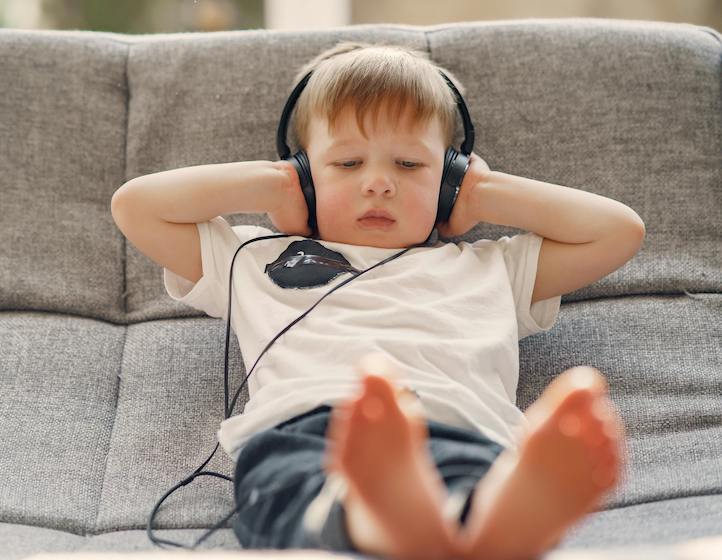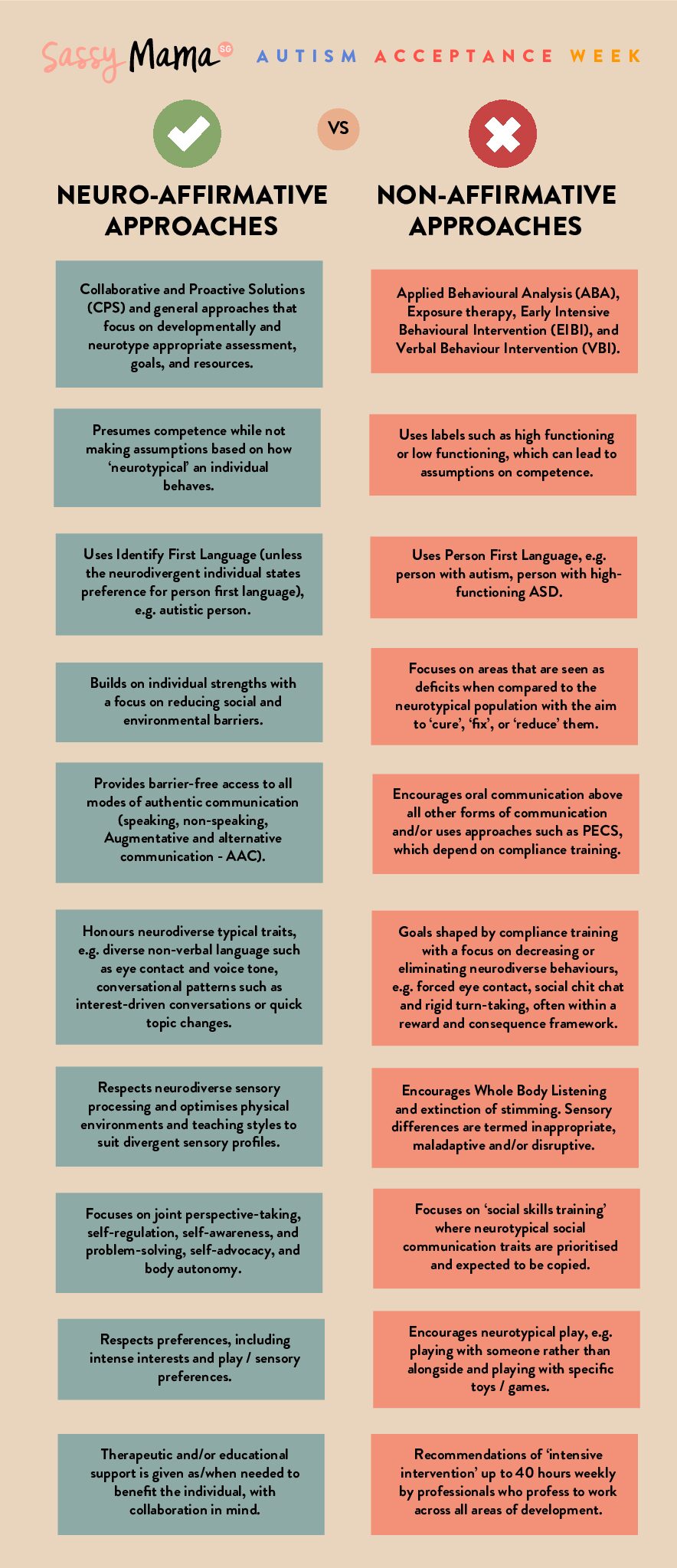
Time for a societal change? Awareness of neurodiversity is one step, acceptance and valuing these differences are the goals. This would mean a shift from ‘corrective’ behaviour therapy offered by Early Intervention centres. Here’s what to know about the Neurodiversity movement.
‘There is nothing wrong with being neurodiverse. It is simply a different way of thinking. Some of the greatest minds in history are suspected of being neurodiverse and their discoveries have changed the world. If as a society, we could find a way to embrace neurodiversity and support individuals rather than treating it as a problem to be solved, we might be a lot further in finding solutions for some of the major problems we are currently facing’ says Donna who is neurodivergent herself and has two neurodivergent children.
As Autism Acceptance Week (previously referred to as Autism Awareness Week) nears, two mamas and Speech and Language Therapists Fátima Ionescu and Melanie Muttit advocate for a societal change to move from awareness of autistic individuals and neurodiversity to acceptance, support and inclusivity instead. The autistic community would like us to move away from Autism Awareness and instead to Autism Acceptance due to the ableist views and perceptions created by Autism Awareness Day. This would also mean not aiming to “fix” or “correct” neurodivergent attributes and characteristics as some Early Intervention centres aim to do and instead looking for neurodiverse-affirming approaches (see below).
*The autistic community prefer identity-first not people-first language which is different to what we know at the moment about those with Down syndrome who prefer people-first language.
Read more: Guide To SPED Schools, Early Intervention Centres & Special Needs Schools In Singapore
Jump to:
– What is Neurodiversity and the Neurodiversity movement?
– Understanding Neurodiversity terminology
– Neuro-affirmative versus non-affirmative approaches
– Helpful Neurodiversity resources and support groups
– Hear from a 12-year-old who has Tourette syndrome
So what is Neurodiversity?

Neurodiversity refers to a world where neurological differences are recognised and respected as all other human variations. Many people within the neurodiversity community use it as an umbrella term to describe alternative thinking styles such as Dyslexia, Dyspraxia, Dyscalculia, Autism, ADHD and Tourette syndrome.
What is the Neurodiversity movement?
The Neurodiversity movement is a social justice movement that seeks civil rights, equality, respect, and full societal inclusion for neurodivergent individuals. It is not a single group or organisation and it does not have a leader. It is made of many individuals who share guiding principles.
Terminology
• Neurodivergent is someone whose brain functions in ways which diverge significantly from the dominant societal standards of what is considered neurotypical. It is not a synonym for autistic, as there are countless possible ways to be neurodivergent.
• Neurotypical is someone whose brain functions in a way that is considered to be the norm.
• Neurominority is a population of neurodivergent people, e.g., dyslexic people, people with Down syndrome, autistic people, etc.
The Neurodiversity community is providing us with therapeutic and educational insights to ensure neurodiverse affirming practices and approaches are used when working with neurodivergent individuals. It is also important to be confident that the clinicians and/or educators have robust academic and professional training in the areas of child development, and adhere to strict regulatory protocols, e.g. Allied Health Professionals such as Speech and Language therapists and Occupational therapists should be registered with AHPC in Singapore.
Below is a comparison between a neuro-affirmative and a non-affirmative approaches:
Neuro-affirmative vs non-affirmative approaches
By moving away from expecting a Neurodivergent individual to mirror neurotypical traits, we are aiming to minimise masking and burn-out, which can lead to anxiety, lowered self-esteem, depression, and increased suicide rates. Thus, it is important to move away from a pathological view of neurodiversity to a social view, where the aim is to reduce ableist perceptions and environmental barriers.
Hear from 12-year-old Noah who has Tourette syndrome

12-year-old Noah was diagnosed with Tourette syndrome. He says “There are two types of people in this world. There are neurotypical people and there are neurodivergent people. Around 15-20% of the people in this world are neurodivergent. Neurotypical people are “Normal people” by that I mean people who don’t have any neurodivergent conditions. While neurodivergent people are people who mentally function differently. The neurotypical people don’t always know the whole story. So they act before they speak. They criticise neurodivergent people because they don’t understand. This needs to stop. We can help by raising awareness. Tell your friends about different conditions, such as ADHD, Tourette syndrome, Autism and tell them to spread the word. By raising awareness we can help people to understand better what neurodivergent people have to go through.
I wish that more people understood how it felt to be neurodivergent and that they reflected more on how it feels to be stared at and that it is not a good feeling. That neurodivergent people have a condition and that their actions are not done with purpose and are out of our control.
Being neurodivergent is my superpower, it is what makes me unique, but it is not the only important thing about me. There is a lot more to me.”
Helpful Neurodiversity resources and support groups
The following resources have been shared by a range of professionals and families. Although we cannot endorse any in particular, we encourage parents to seek advice from neurodivergent individuals, as and when possible.
Facebook groups:
- Autism Inclusivity
- The au-some book club
- Ask me, I’m an AAC user
- ADHD Whisperer
- Ask Autistic Adults – Resources for Parents of Autistics
- The B team
General Resources:
- Autism Level up
- Therapist Neurodiversity Collective
- Neuroclastic
- Autistic Mama
- Collaborative and Pro-active Solutions (CPS)
Books:
- Beyond Behaviors by Mona Delahooke PhD – This book is not autism-specific
- Raising Human Beings: Ross Greene
- NeuroTribes: the Legacy of Autism and the Future of Neurodiversity by Steve Silberman
- Start Here: a guide for parents of autistic kids: Autistic Self Advocacy Network
- Welcome To the Autistic Community by Lar Berry and The Autistic Self Advocacy Network
- Sincerely, Your Autistic Child by AWNN
- The Reason I Jump by Naoki Higashida
- Loud Hands: Autistic People Speaking (Anthology) Julia Bascom
- Ido in Autism land by Ido Kedar
- It’s An Autism Thing, I’ll Help You Understand It by Emma Dalmayne
- Anatomy of Autism: A Pocket Guide for Educators, Parents, and Students by Diego Pena
- Leaders Around Me: Autobiographies of Autistics who Type, Point, and Spell to Communicate ed by Edlyn Vallejo Peña
- All the Weight of Our Dreams: On Living Racialized Autism edited by Lydia X Z Brown et al. (By autistic women of color)
- Typed Words Loud Voices edited by Amy Sequenzia & Elizabeth J. Grace
- New Science and Essential Strategies for Thriving with Distraction–from Childhood through Adulthood: Edward M. Hallowell M.D. & John J. Ratey M.D: ADHD 2.0:
- Smart but Scattered Teens: The “Executive Skills” Program for Helping Teens Reach Their Potential: Colin Guare
- Smart but Scattered: The Revolutionary “Executive Skills” Approach to Helping Kids Reach Their Potential: Peg Dawson & Richard Guare
- What Your ADHD Child Wishes You Knew: Working Together to Empower Kids for Success in School and Life: Sharon Saline & Laura Markham
- Unmasking Autism: Discovering the New Faces of Neurodiversity by Devon Price
- The Awesome Autistic Go-To Guide: Yenn Purkis and Tanya Masterman
- How to ADHD: An Insider’s Guide to Working with Your Brain (Not Against It) by Jessica McCabe
Huge thanks to Speech and Language Therapists Fátima Ionescu and Melanie Muttit for putting this insightful and helpful article together – your work has helped so many families in Singapore!
Research:
- Stress and anxiety: In a 2019 study, researchers found that stress and anxiety were higher in people who routinely masked autistic traits, compared to those who used masking less often.
- Depression: In 2018, researchers interviewed 111 autistic adults, finding that those who reported masking their autistic traits had symptoms of depression and felt unaccepted by people in their social sphere.
- Exhaustion: Masking consumes huge amounts of energy. In a 2016 study women who used masking to satisfy neurotypical standards said they felt exhausted by the constant effort.
- Loss of identity: Some people who mask their identity, interests, and traits end up feeling that they no longer know who they really are. Some have said masking feels like self-betrayal; others have said masking makes them feel they’re deceiving other people.
- Risk of autistic burnout: When people push themselves to behave in ways that don’t feel authentic, the result can be an overwhelming feeling of overload, sometimes called autistic burnout. Masking may require an extended period of quiet withdrawal and recovery.
- Increased risk of suicidal thoughts. In a recent study, prolonged masking was linked to “lifetime suicidality.” The study was relatively small (160 students) and involved primarily women (89.6 percent). However, it showed that masking led to feeling like a burden, which in turn led to more suicidal thoughts over the course of a lifetime.






 View All
View All




 View All
View All










 View All
View All






![[𝗡𝗘𝗪] 𝗣𝗮𝘀𝗶𝗿 𝗥𝗶𝘀’ 𝗕𝗿𝗼𝗻𝘁𝗼𝘀𝗮𝘂𝗿 𝗣𝗮𝗿𝗸 𝗶𝘀 𝗕𝗔𝗖𝗞. 𝗦𝗮𝗳𝗲𝗿 & 𝗙𝗨𝗟𝗟 𝗼𝗳 𝗗𝗶𝗻𝗼-𝗦𝗶𝘇𝗲𝗱 𝗙𝘂𝗻! 🦕🦖
A dinosaur you can climb into, a tail slide you can zoom down, and plenty of spots for kids to swing, bounce, and explore? Yeap, it’s a full-on dino adventure. After being closed for a major revamp, Brontosaur Park is now officially open (and safe!) for little adventurers to run wild.
Comment “DINO” or hit the link in bio for more epic outdoor playgrounds in Singapore!
𝗪𝗵𝗮𝘁 𝘄𝗲 𝗹𝗼𝘃𝗲:
- A Brontosaurus structure kids can explore from the legs to the belly
- A roller slide that goes right down the dino’s tail
- Rope bridges, climbing nets & hammocks between stego spikes = plenty of ways to burn off energy
- Toddler-friendly mini dino zone for the little ones
- Spot dino sculptures painted by residents (hidden all around the park)
𝗧𝗶𝗽𝘀 𝗳𝗼𝗿 𝗺𝗮𝘅 𝗳𝘂𝗻:
- Wear grippy shoes. Lots of climbing involved
- Pack snacks and water (There are minimarts nearby)
𝗪𝗵𝗲𝗿𝗲? The playground is located between Blk 777 & 778, along Pasir Ris St 71
𝗖𝗼𝘀𝘁? FREE!
.
.
.
.
.
#DinoPlaygroundSG #PasirRisPlayground #SgPlaygrounds #OutdoorFunSG #FreePlaygroundsSG #BrontosaurPark #SgFamilyAdventures #ThingsToDoWithKidsSG #SingaporeWithKids #PlaygroundGoalsSG #ToddlerPlaySG](https://www.sassymamasg.com/wp-content/plugins/instagram-feed/img/placeholder.png)
